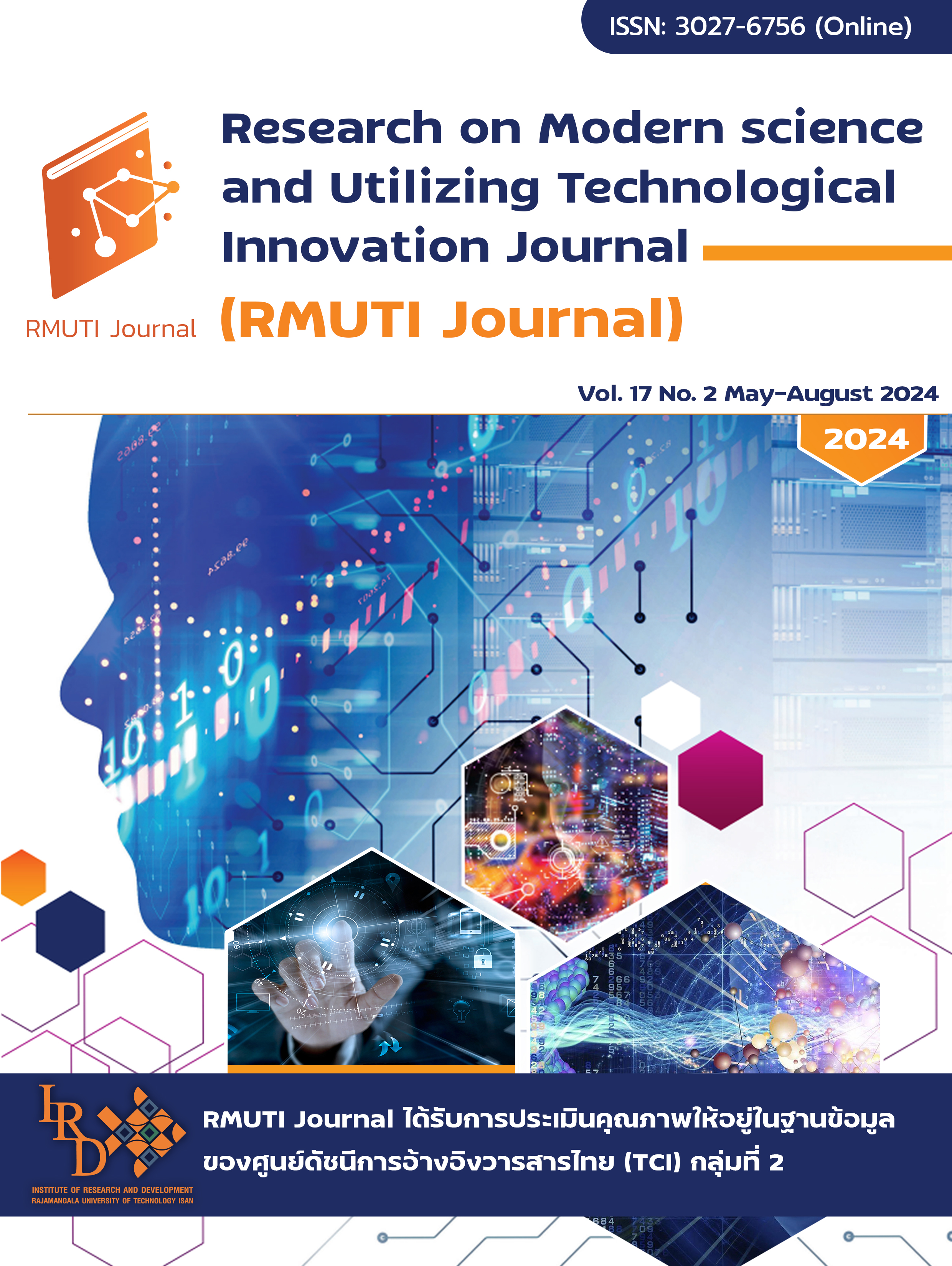The Reflective Coefficient and Physical Characteristics on Light Intensity in Lecture Classrooms at a University, Bangkok
Main Article Content
Abstract
The intensity of light in the classroom affects learning. There are few studies of lighting in classrooms in urban university buildings with tall buildings, including physical factors that may affect lighting. The objective of this exploratory study was to investigate the reflectance coefficient and the physical characteristics that affect light intensity in three lecture-style classrooms: small, medium, and large, comprising a total of 42 classrooms at a university. The tools used are a lux meter and an observation form. The statistics used in the analysis include number, percentage, mean, standard deviation, One-way ANOVA, and Pearson's correlation. The results of the study found that the most small and large classrooms met the standards. On the other hand, in medium-sized classrooms, 62.0 % did not pass the standards. The large classrooms have the highest average light intensity, equal to 652.09 (S.D. = 31.61). When comparing the average lighting intensity of the three classroom sizes, it was found that there were statistically significant differences (p<0.05). For floor and wall reflection coefficients, it was found that white floors had the highest coefficient and different colors had significantly different light reflection coefficients (p<0.05). In small classrooms, the surface light reflection coefficient is positive related to the light intensity (p<0.05). In medium-sized classrooms, it was found that the light intensity from artificial light was significantly positiverelated to the light intensity (p<0.05). The intensity of light is influenced by the reflection coefficient. This is caused by the floor and wall colors, in addition to the illumination from light bulbs and outside light. Classrooms should measure light intensity to a standard value of 400-500 lux for reading and writing tasks. The classrooms should have white walls, and if the light measurement is insufficient, should increase the light bulb or the wattage of the light, which is artificial light.
Article Details

This work is licensed under a Creative Commons Attribution-NonCommercial-NoDerivatives 4.0 International License.
References
Samani, S.A., Samani, S.A. (2012). The impact of indoor lighting on students' learning performance in learning environments: A knowledge internalization perspective. International Journal of Business and Social Science. Vol. 3, No. 24, pp. 127-136.
Mogas-Recalde, J., Palau, R. (2021). Classroom lighting and its effect on student learning and performance: Towards smarter conditions. In Ludic, Co-design and Tools Supporting Smart Learning Ecosystems and Smart Education: Proceedings of the 5th International Conference on Smart Learning Ecosystems and Regional Development. pp. 3-12. Singapore : Springer Publisher
Küller, R., Ballal, S., Laike, T., Mikellides, B., Tonello, G. (2006). The impact of light and colour on psychological mood: a cross-cultural study of indoor work environments. Ergonomics. Vol. 49, No. 14, pp. 1496-507.
Kittikong, P., Sakunkoo, P., Khuancharee, K., Arkkarachiphong, K. (2017). Quantity of Illumination and physical characteristics in the classroom that affects student’s fatigue of eyes feeling Case study: A primary school at Khon Kaen province. Journal of The Office of DPC7 Khon Kaen. Vol. 24, No. 3, pp. 10-18. (in Thai)
Hongsa, T., Polyong, C.P. (2023). Risk assessment of ergonomics and school environment that are conducive to good health of students and staff in a primary school, Chonburi province: A pilot study. In The 7th International and National Rajabhat Research Academic Conference. pp. 85-95. Sakon Nakhon : Sakon Nakhon Rajabhat University Publisher (in Thai)
Winterbottom, M., Wilkins, A. (2009). Lighting and discomfort in the classroom. Journal of Environmental Psychology. Vol. 29, No. 1, pp. 63-75.
Liu, Q., Huang, Z., Li, Z., Pointer, M.R., Zhang, G., Liu, Z. (2020). A field study of the impact of indoor lighting on visual perception and cognitive performance in classroom. Applied Sciences. Vol. 10, No. 21, pp. 7436.
Minovic, S., Vincze, G., Fink, A., Fischerauer, S.F., Sadoghi, P., Leithner, A., Kamolz, L.P., Tscheliessnigg, K., Bernhardt, G.A. (2022). Positive effect of colors and art in patient rooms on patient recovery after total hip or knee arthroplasty: A randomized controlled trial. Wien Klin Wochenschr. Vol. 134, No. 5-6, pp. 221-226.
Katunský, D., Dolníková, E., Dolník, B., Krajníková, K. (2022). Influence of light reflection from the wall and ceiling due to color changes in the indoor environment of the selected hall. Applied Sciences. Vol. 12, No. 10, pp. 5154.
Announcement of the Department of Labor Protection and Welfare. (2018). Regarding lighting intensity standard. Royal Gazette. (in Thai)
Illuminating Engineering Society of North America (IESNA). (2000). IESNA lighting handbook. Avenue, N. Y. : McGraw-Hill Publishers.
Department of Occupational Safety and Health. (2018). Guidelines on occupational safety and health for lighting at workplace. Ministry of Human Resources. Malaysia
Egan, M.D., Olgyey, V.W. (1983). Architectural lighting. Avenue, N. Y. : McGraw-Hill Publishers.
Tongtrongsap, K., Meesuk, P. (2018). The effect of walls colors of artificial light from T8 LED lamps on generating of electricity from solar cells. Burapha Science Journal. Vol. 23, No. 3, pp. 1317-1329. (in Thai)
Wongmaso, K., Ingkharojrit, W. (2019). Characteristics of color and light on women's satisfaction: a case study of cosmetic counters. Master of Architecture Faculty of Architecture Chulalongkorn University. Bangkok (in Thai)
Hanafy, I., Sanad, R. (2015). Colour preferences according to educational background. Procedia – Social and Behavioral Sciences. Vol. 205, pp. 437-444.


